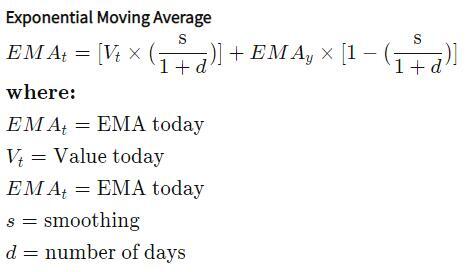
They can be current or provided in the future such as utility payments or staff salary dues. Balance sheets are one of the four key financial statements construction contractors must use to manage their books. The other three are the Income Statement, the Cash Flow Report, and the WIP (Work in Progress) Schedule. Therefore, when looking at the CIP accounts on the balance sheet in detailed format, the project may have a balance in its account. Most often they do not; but this is strictly a determination made by management in evaluating their monthly progress for projects. For the sake of ease and understanding, Construction in Process or Construction in Progress will be referred to as CIP.
If preparing a report for the year to date, you can take amounts from your trial balance report to complete the income statement. On the other hand, if you invoice for 55% of a phase, but you’ve only completed 40% of the work thus far, you’re overbilling. As expected, your accountant will record any overbilled work as a liability in your balance sheet. This is because you’re still on the hook to complete the work even though you’ve already sent the invoice.
Understanding each contract type and knowing which projects call for a certain type of contract will help construction businesses keep track of their costs and revenue more accurately. Construction businesses that have annual revenues exceeding $25 million over the last three years are required to use the percentage of completion method. These larger businesses also include general overhead costs within each project, which has the advantage of providing clear insight into exactly how profitable each job is. The accrual method offers a more forward-looking view of a company’s finances by recognizing revenues and expenses as soon as bills are sent and received. For example, a construction company that has sent a bill for payment will record it as revenue even though the payment itself has not yet been received. Similarly, when the business receives a bill from a vendor or supplier, it will be recorded as an expense even if payment hasn’t yet been sent.
Debt-to-Equity Ratio
Negative WIP values can be trickier to solve for, especially if the value is excessively large. This negative value indicates that you are billing ahead of construction costs for that particular project area. Having your bank account increasing on the surface may look like your business is successful and profitable. Construction work in progress is a report that summarizes the monetary value of all the work you’ve completed but are yet to invoice. As previously mentioned, WIP will, alongside the percentage of completion method to show how much you’ve spent relative to actual work completed.
On the flip side of this are deposits and draws received for the projects. These are sometimes referred to as billings and are handled in several different ways for the purpose of properly recording this information to the profit and loss statement. Again, I cover the deposits and draws for projects in a related article that I will post to this site prior to the end of May 2016. I hope the procedures described above will be good enough to make a balance sheet format for a construction company in Excel. Feel free to ask any question in the comment section and please give me feedback.
Construction Balance Sheet: A How-to Guide for Owners (CFMA template)
The goal is to balance WIP by billing for any remaining work that you’ve completed. By doing so, you’ll remain on track with billing for your project, and your balance sheet should be accurate. This can enable a proactive, rather than reactive, outlook concerning construction project management.

You can’t evaluate each of the projects based on their respective percentage of progress against the corresponding direct costs and determine overall production for the company. With this information and understanding of the auxiliary information I provide you should begin to appreciate the relationships CIP provides to the other areas of the financial reports. The assets that a company owns include short-term assets like cash and accounts receivable, as well as long-term assets like real estate, plants, and equipment. The percentage of completion method is a type of accrual accounting, but it recognizes revenues, expenses, and profit based on how much work is already finished on a project. This accounting method is particularly useful for large construction businesses and companies with long-term contracts. Additionally, balance sheet templates allow you to enter projected figures so that you can compare your current financial standing with your projected or target finances.
Income Statement (Profit & Loss)
Interest capitalization is required only when the balance of the informational benefit and the cost of implementation is favorable. A favorable balance is unlikely in the case of inventory items that are routinely manufactured or otherwise produced in large quantities on a repetitive basis. Lenders and financing companies use income statements to assess the profitability of a construction business when they are requesting a loan or financing. Lenders will often look the income statement and other financials to get a good feeling for where the business stands financially. They may request income statements from past years to look for trends.
On the other hand, a company with a debt-to-equity ratio of less than 1 may not be using enough debt financing to take on new projects and grow. Examples of liabilities include accounts payable (AP), capital lease payable, accrued payables, and notes payable. Even with this advantage, the cash method is typically only viable for very small construction businesses. Understanding each type of construction accounting — as well as the advantages and disadvantages of each — can help a construction business choose the right method for its situation. In this article, we’ll explore some of the more common sets of financial ratios and how you can use them to measure the performance of your business within the construction industry.
What Is a Balance Sheet?
This cycle continues throughout the life of the construction company, which gains a competitive advantage by using real-world job cost data to optimize bids, estimates, profit margins, and more. Based on his current standing, John has a debt-to-equity ratio of 3.0. This means that his creditors have three times as much invested in the company as he does. Too high of a ratio could indicate inefficient use of working capital. In other words, an excess of short-term assets (like cash) might be sitting idle instead of gaining interest as long-term investments.
West Liberty University Mourns Passing of Gary E. West – West Liberty University
West Liberty University Mourns Passing of Gary E. West.
Posted: Wed, 06 Sep 2023 23:47:55 GMT [source]
From there, you subtract your general and administrative expenses (office supplies, administrative salaries, membership dues, etc.). Remember that the sheet always needs to balance, so when a transaction represents something on one credit risk side, it must represent a corresponding value on the other side. For example in the case of a bank loan, there is an increase in Cash on the left side, and this must be balanced by an increaase in Notes Payable on the other side.
Gain Insight into Your Company’s Financial Position with Balance Sheets in Smartsheet
Save this printable template as a year-by-year balance sheet, or easily customize it to be a day-by-day or month-by-month balance sheet. Enter projected figures to see your financial position compared to your financial goals. This financial statement lists everything a company owns and all of its debt. A company will be able https://online-accounting.net/ to quickly assess whether it has borrowed too much money, whether the assets it owns are not liquid enough, or whether it has enough cash on hand to meet current demands. The Work-in-Progress report (WIP) is a tool used in conjunction with your balance sheet to show the progress on current projects and those under contract.
A balance sheet also serves as a company or organization’s financial position over specified time, such as daily, monthly, quarterly, or yearly. The term balance sheet refers to a financial statement that reports a company’s assets, liabilities, and shareholder equity at a specific point in time. Balance sheets provide the basis for computing rates of return for investors and evaluating a company’s capital structure. Aren’t my income statement and cash flow projections enough to project success?
- For example, corporations will have their equity broken down into investments, retained earnings, and net income.
- The Construction Financial Management Association (CFMA) offers a helpful template for construction businesses.
- This is especially true with a company that uses mostly long-term contracts, which are generally more compatible with the percentage of completion method.
- For all of the values used in an efficiency ratio, it’s important to look at the same range of time.
- Use these balance sheet templates as financial statements to keep tabs on your assets (what you own) and liabilities (what you owe) to determine your equity.
Manually tracking cash flow, using excel spreadsheets, or not having your WIP reports visible within your project can create added stress and room for error. One potential downside of the percentage of completion method is that businesses may incidentally underpay or overpay for taxes depending on how accurately they estimate costs. Job costing is a form of project-based accounting that helps construction companies keep track of the expenses for a specific job or project. Once you’ve completed your analysis, you can begin to make changes in your business to affect your financial position. These changes can include investing profits back into the company, reallocating assets, and changing inventory levels. The report details your income and expense activities during the time period.
Below are several of the most common accounting ratios, including the current ratio, quick ratio, debt-to-equity ratio, and working capital turnover. The current ratio measures the degree to which a contractor has the resources to cover financial obligations. This ratio is computed by dividing current assets (e.g., cash, marketable securities) divided by current liabilities (e.g., accounts payable, debt obligations due within one year).